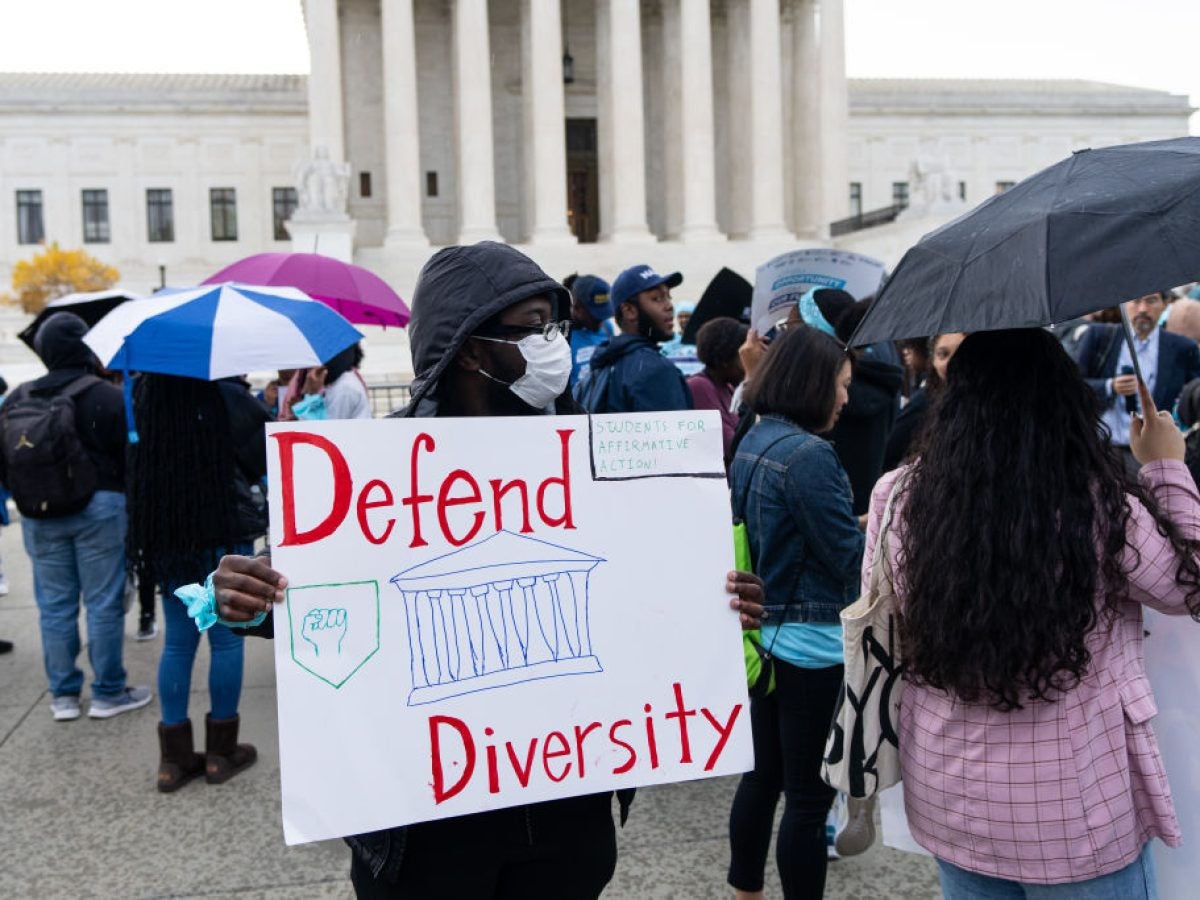
Before the Supreme Court adjourns for recess this summer, pundits expect them to decide on two affirmative action cases on the docket: Students for Fair Admissions, Inc. (SFAI) v. President and Fellows of Harvard, the oldest private college in the U.S., and SFAI v. University of North Carolina (UNC), the country’s oldest public university.
In these cases, SFAI contends “that Harvard’s admissions policy discriminates against Asian American applicants,” and that UNC discriminates against both Asian American and white applicants.
Both universities have rejected these claims and defended their policies used in making admissions decisions.
Despite the fact that the court’s conservative majority is expected to rule against the practice of allowing race to be considered in college admissions, “Americans largely seem to favor affirmative action in college admissions,” per The Associated Press-NORC Center for Public Affairs Research’s May poll.
In fact, “[s]ixty-three percent of adults polled, across racial and political lines, said the Supreme Court shouldn’t block colleges from taking applicants’ race and ethnicity into account in the admission process.”
Given the high court’s impending decision, here are seven things you need to know about the cases and the status of affirmative action in the United States:
One man is behind it all
Both cases are brought by the same right-wing organization, Students for Fair Admissions, which president Edward Blum, hailing from Tallahassee, Florida, founded to start challenging “higher education affirmative action policies in court.” He argues that affirmative action policies violate the 14th amendment and the 1964 Civil Rights Act.
This isn’t the first time the High Court has taken up this issue
In the past, the Supreme Court ruled in favor of the policy—“[i]n the landmark 1978 case Regents of the University of California v. Bakke, the Supreme Court ruled that colleges could consider race as one of many factors in admissions, but schools cannot set aside a specific number of spots for minority students,” a ruling which was upheld in both 2003 and again in 2016, but is now at risk of being overturned.
Legal commentators are preparing for the worst possible outcome
With no swing vote and a 6-3 majority in favor of GOP-appointed justices, many of whom have “expressed skepticism about the role of race in admissions during oral arguments” back in October, most legal authorities expect the court to rule against Harvard and UNC.
It’s already illegal to use race in college admissions in some parts of the country
Nine states– Arizona, California, Florida, Idaho, Michigan, Nebraska, New Hampshire, Oklahoma, and Washington– have already “enacted bans on racial preferences in state colleges, with some reporting a drop in African American and Latinx admissions at top institutions.”
Other policies have not been shown to work as an equivalent replacement of the policy and maintain diversity
The University of California and the University of Michigan, two top public school university systems in states that have outlawed using race as a factor in admissions, have filed amicus briefs with the court in support of affirmative action policies, arguing that “they have spent hundreds of millions of dollars on alternative programs intended to improve diversity, but that those efforts have fallen far short of their goals.”
Former Justice Sandra Day O’Connor is being quoted out of context with regard to a time frame she mentioned in the majority opinion of Grutter vs. Bollinger
O’Connor said “[t]he court expects that 25 years from now the use of racial preferences will no longer be necessary.” This was an oft-cited quote during oral arguments, but O’Connor herself has recanted a strict reading of this statement, explaining it was an overly opportunistic and hopeful prediction, even telling her biographer “That may have been a misjudgment.”
SFAI wants to conflate race with class
SFAI wants schools to use class-conscious admissions practices instead of affirmative action; however, “a study released…by Georgetown University’s Center on Education and the Workforce found that admissions practices that consider class but not race would still leave selective colleges without the representation of Black, Hispanic, Indigenous and Pacific Islander students seen in U.S. high schools.”







